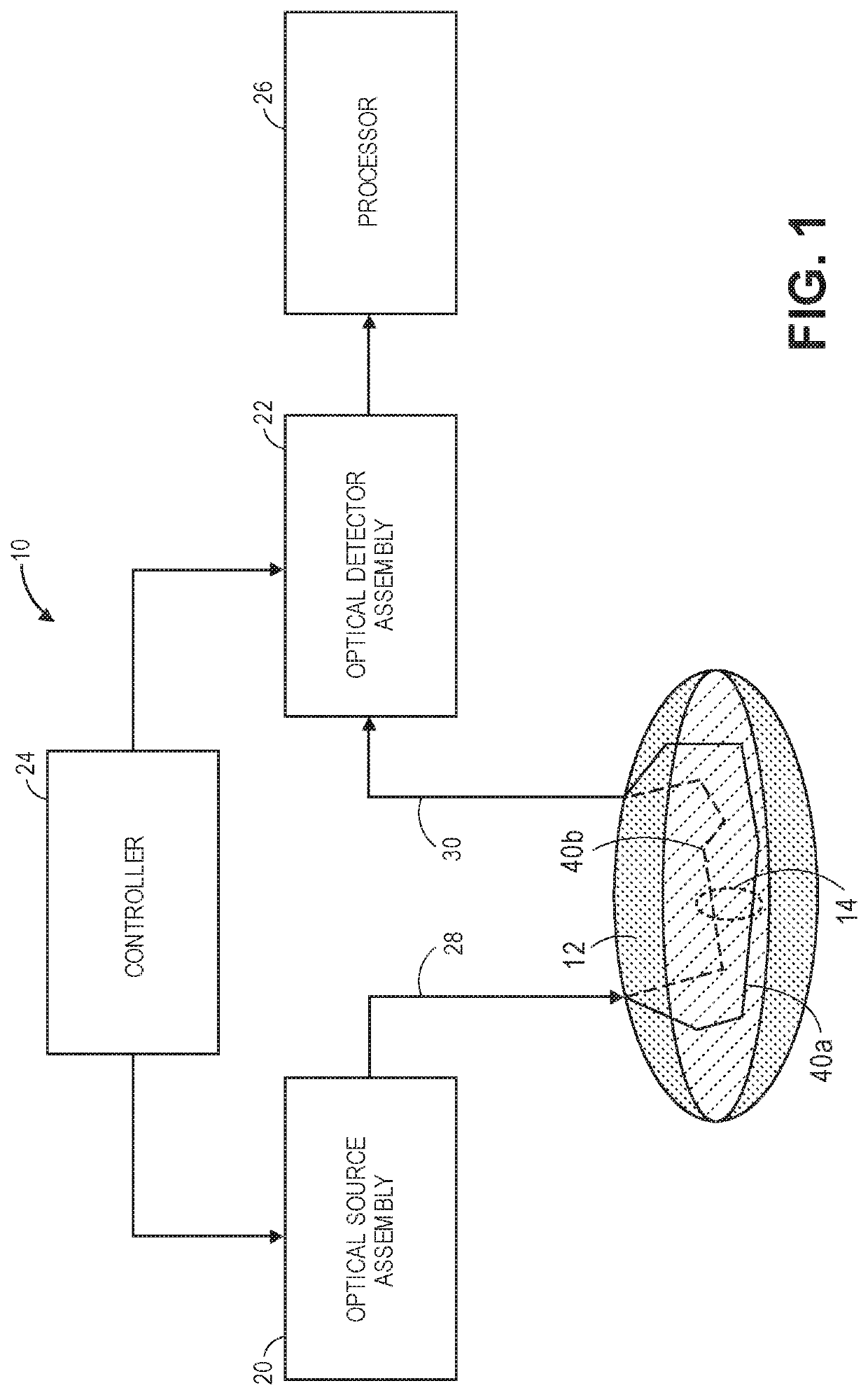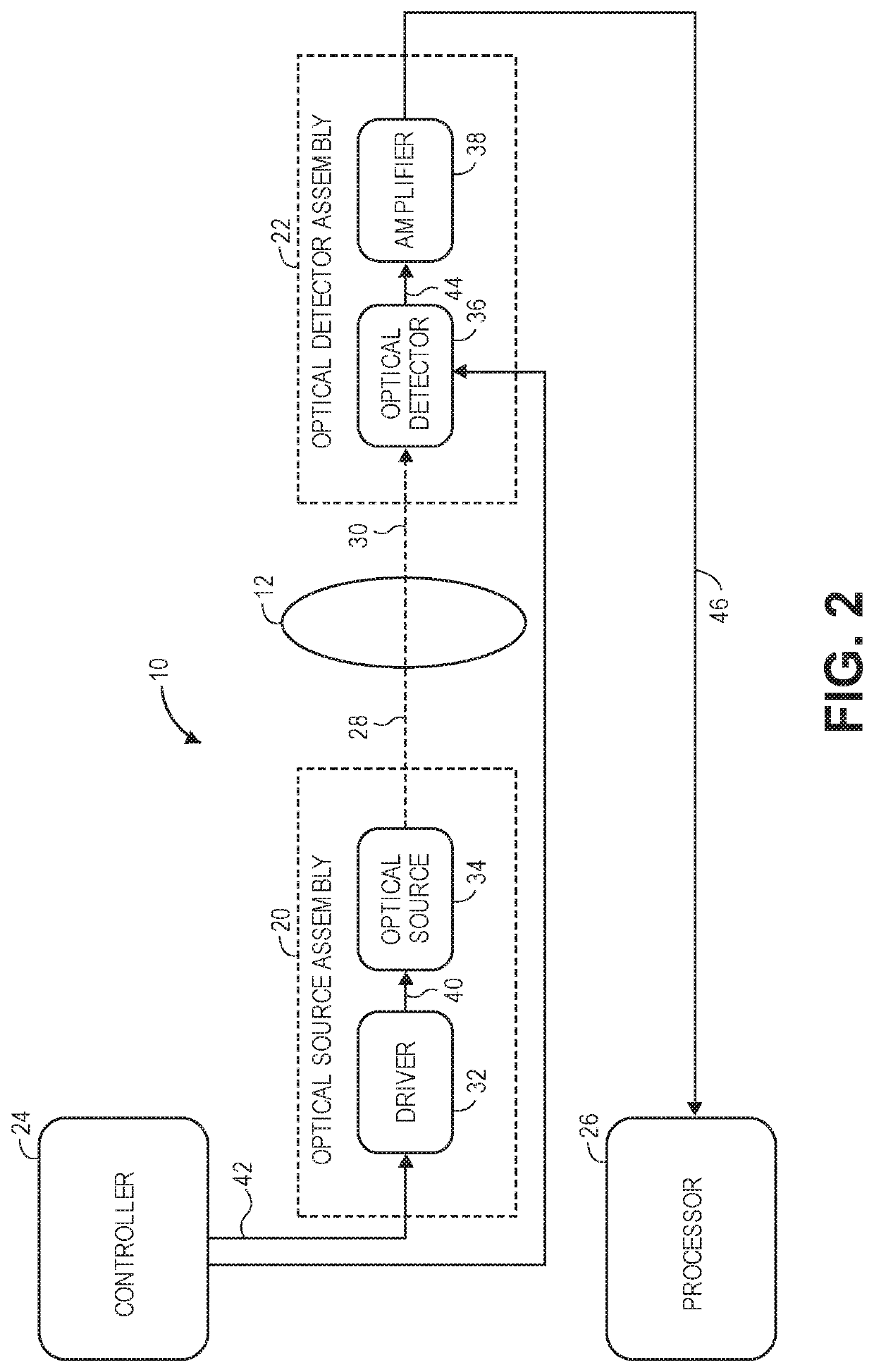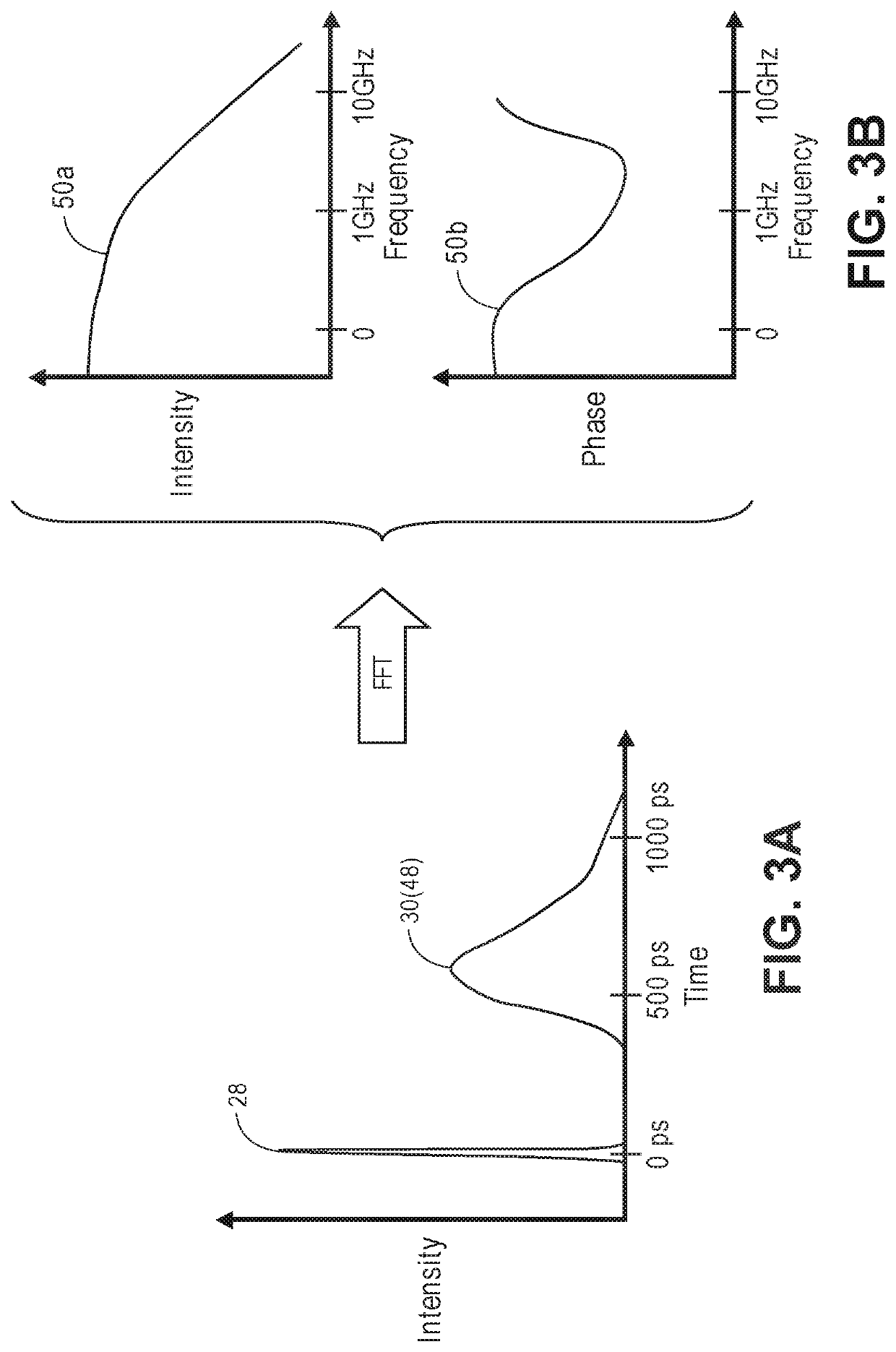Time-of-flight optical measurement and decoding of fast-optical signals
a technology of optical measurement and optical signal, applied in the field of noninvasive measurement methods and systems in the human body, can solve the problems of difficult prediction without detailed microscopic knowledge of the scattering characteristics of the brain volume of interest, difficult to obtain fast-optical signals by conventional optical detectors, and difficult to achieve the effects of sufficient temporal resolution and sensitivity
- Summary
- Abstract
- Description
- Claims
- Application Information
AI Technical Summary
Benefits of technology
Problems solved by technology
Method used
Image
Examples
Embodiment Construction
[0079]Referring to FIG. 1, one embodiment of an optical measurement 10 (and variations thereof) constructed in accordance with the present inventions will be described. The optical measurement system 10 is designed to non-invasively acquire physiological-encoded signal light (i.e., signal light representative of a physiologically-dependent optical parameter) in an anatomical structure 12 via one or more optical paths 14, processing the physiological-encoded signal light, and distinguishing between states of a physiological activity within the anatomical structure 12.
[0080]It should be appreciated that the term “state,” in the absolute sense, is arbitrary, and is only meaningful in the relative sense when compared to other states. For example, the physiological activity may have either an active state or an inactive state in a binary sense (either the physiological activity is present or the physiological activity is absent), or the physiological activity may have many (even an infin...
PUM
 Login to View More
Login to View More Abstract
Description
Claims
Application Information
 Login to View More
Login to View More - R&D
- Intellectual Property
- Life Sciences
- Materials
- Tech Scout
- Unparalleled Data Quality
- Higher Quality Content
- 60% Fewer Hallucinations
Browse by: Latest US Patents, China's latest patents, Technical Efficacy Thesaurus, Application Domain, Technology Topic, Popular Technical Reports.
© 2025 PatSnap. All rights reserved.Legal|Privacy policy|Modern Slavery Act Transparency Statement|Sitemap|About US| Contact US: help@patsnap.com



